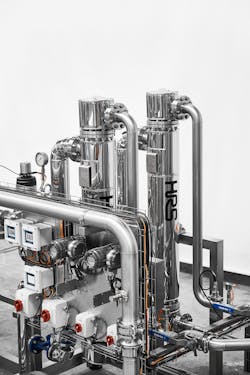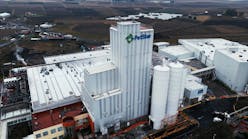In the simplest terms, a heat exchanger is like a radiator, designed to heat (or cool) one material from another. However, over the last 150 years or so, a wide variety of types and designs have emerged, meaning that finding the most suitable type of heat exchanger for your application is not always simple.
Heat exchangers often play a key role in wastewater treatment, and all but the most basic heat exchangers are created to a bespoke brief, designed to consider the materials being heated or cooled, the heating or cooling medium, the amount of effluent being processed, velocity, risk of fouling and a host of other factors. However, over the years some standard design types have emerged (as well as more specific types) and understanding the differences between these can make the specification process less of a mystery.
In this article, we guide you through the main types of heat exchanger produced by HRS and what applications each is best suited to.
Key considerations
Our industrial heat exchangers are suitable for a range of environmental and wastewater applications, including digester heating and evaporation.
The first consideration to bear in mind is the nature of the material being processed, in particular its viscosity and whether it contains particles. The simpler and less viscous the material, the simpler the heat exchanger can be. As materials become thicker, or contain suspended particles or large solids, then heat exchange becomes more difficult, and more sophisticated designs are required to guarantee the necessary performance. Starting with simple multi tube designs, the range moves through double tubes – where viscosity is higher or solids are present – and annular space designs for highly viscous products, with the most challenging materials (such as very thick digestate sludges) requiring the use of scraped surface heat exchangers.
Another consideration is what happens in the event of a leak. In certain circumstances a leak can be business critical or cause significant environmental damage. In such cases, double tubeplate multitube heat exchangers should be specified, as these provide leak detection to avoid cross contamination between the service and product fluids.
Main heat exchanger types
Most heat transfer applications will require the use of corrugated tube heat exchangers. These offer several benefits over smooth tube designs – in particular, heat transfer and energy efficiency are increased (making them better for high-capacity heating or cooling). Fouling is also minimized meaning that units can be more compact and economical, and cleaning and servicing requirements are reduced.
For the most challenging applications (such as materials with high fouling potential, or where certain product characteristics are required), scraped surface heat exchangers are used.
Corrugated tube heat exchangers
HRS offers two types of corrugated tube heat exchangers for wastewater applications:
- Double tube heat exchangers
- Multitube heat exchangers
Double tube heat exchangers consist of a tube within a tube and are among the most versatile corrugated tube heat exchangers. The HRS DTI Series is a true counter current heat exchanger for industrial use and is ideal for thicker effluents and light sludges. The HRS DTIR Series is based on the DTI but has been adapted for direct energy recovery (product vs product), in sludges with low viscosity. The tube is removable for easier and faster cleaning, reducing operational downtime when processing high fouling products such as sludge heating/cooling, digester heating and sludge-to-sludge heat recovery.
Multitube heat exchangers are the simplest design and carry the product in more than one interior tube, while the service fluid flows through the surrounding shell. The HRS K Series is a complete stainless-steel shell and tube heat exchanger designed for environmental use and is ideal for applications such RAS (Return Activated Sludge), as well as general applications with low- to medium-viscosity materials.
Scraped surface heat exchangers
Scraped surface heat exchangers (SSHEs) are the preferred choice for difficult heat transfer applications; for example, those with high viscosities and where fouling can become a problem.
The patented Unicus Series is based on a traditional shell and tube heat exchanger, but with scraping elements inside each tube. The reciprocating movement of the scrapers mixes the fluid whilst cleaning the heat exchange surface. This keeps heat transfer high and reduces downtime. The Unicus Series is ideal for the evaporation of digestate and sludges. The HRS R Series is designed for the most difficult heat transfer applications, for example, very high viscosities and highly fouling fluids. It uses a rotary scraper rod which can reach velocities of up to 300 rpm, resulting in very high levels of shear and mixing at the heat transfer surface, and dramatically increasing the heat transfer rate. A heavy-duty version (the HRS RHD Series) has also been developed for the most demanding applications with extreme viscosities such as crystallization.
Wherever you require heat transfer in your wastewater processing, whether heating effluent, evaporating sludge or pasteurizing digestate, HRS have the ideal heat exchanger for you, and the expert staff to help you find it.



